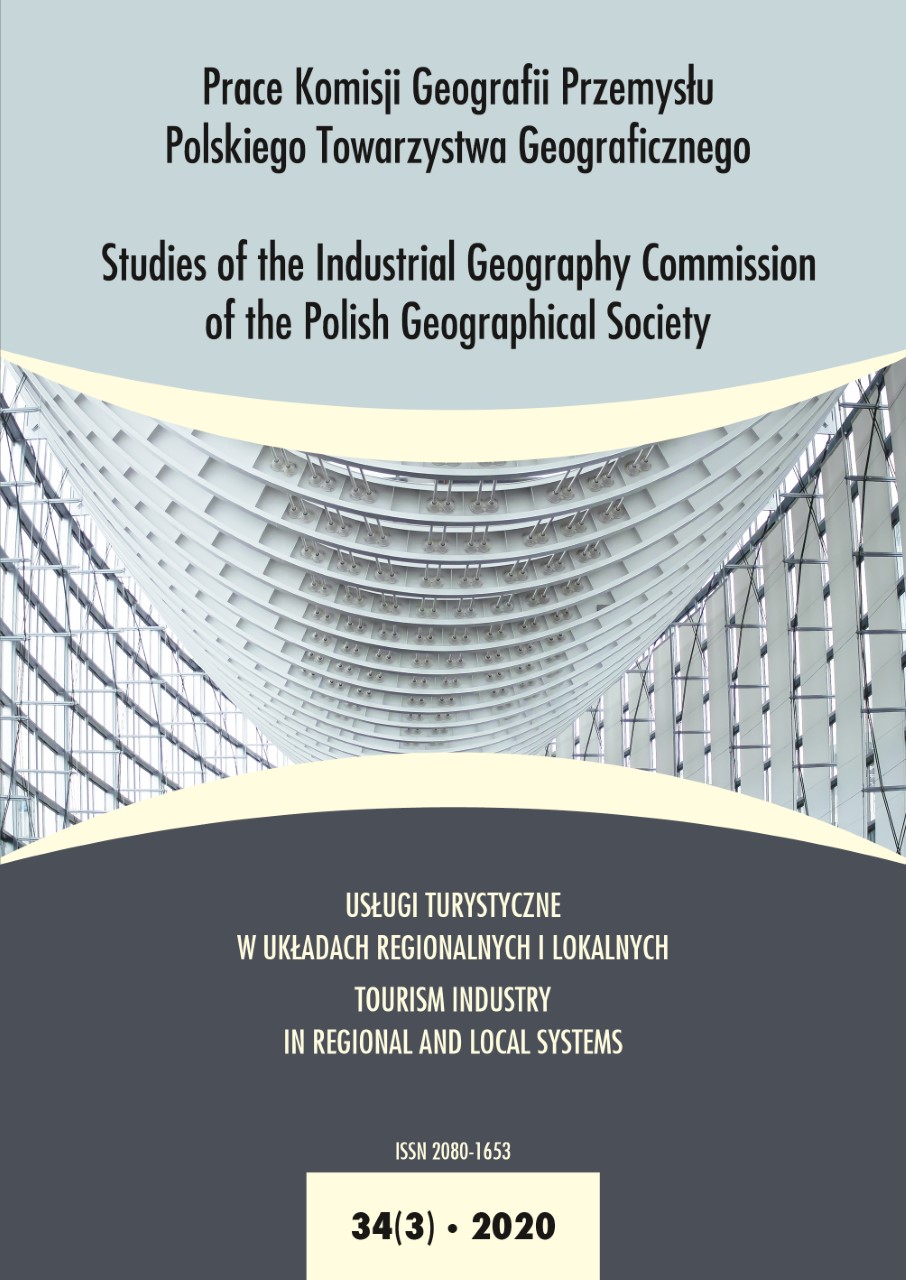Classification of Countries of Destination by Gross and Relative Values of International (Inbound) Tourism and its Factors
DOI:
https://doi.org/10.24917/20801653.343.9Keywords:
classification of countries of destination, factors of inbound tourism, international tourist arrivals, profitability of inbound tourism, receipts from inbound tourismAbstract
The present work is aimed at the analysis of gross and relative values of inbound tourism by countries of destination for the purpose of their classification. As a result of confronting total and specific (per 1 km of conventional radius of the country’s territory) numbers of international tourist arrivals with the median values for 100 countries of the world as of 2016, countries of destination were divided into four classes. Small countries of intensive inbound tourism are predominantly represented by tropical islands of the Caribbean Basin and Indian Ocean, as well as by the Mediterranean region. Over half of big countries of intensive inbound tourism are located in Europe and the Mediterranean destinations were the most often visited ones. Big countries of extensive inbound tourism show significant volume of inbound tourism in the first place due to their significant territories. Among these, there were Scandinavian destinations of Europe, Canada and Russia. The low intensity of their inbound tourism is explained by the unfavourable climate for human thermal-physiological sensations. Small countries of not-intensive inbound tourism had considerably less volume and intensity of tourism arrivals due to their small territories, unfavourable geographical conditions, but, what is most essential, also due to the poverty. In addition, cost indicator, that is receipts from inbound tourism per one arrival, was taken into account in the analysis. The factors that have influence over it were also disclosed.Downloads
Metrics
References
Aleksandrova, A.Yu. (2002). Mezhdunarodnyi turizm [International tourism]. Moscow: AspectPress [in Russian].
Boniface, B., Cooper, C. (2009). Worldwide Destinations: The Geography of Travel and Tourism. Oxford: Butterworth Heinemann.
Charles R. Goeldner, J.R. Brent Ritchie (2009). Tourism: Principles, Practices, Philosophies. John Wiley & Sons, Inc., Hoboken, New Jersey.
Horkavyi, V.K., Yarova, V.V. (2004). Matematychna statystyka [Mathematical Statistics]. Кyiv: VD Profesional [in Ukrainian].
Janczak, K., Patelak, K. (2013). Zagraniczna turystyka przyjazdowa do Polski w 2013 roku. [Inbound tourism to Poland in 2013]. Retrieved from http://docplayer.pl/4885847–Katarzynajanczak-krzysztof-patelak-zagraniczna-turystyka-przyjazdowa-do-polski-w-2013–roku.html [in Polish].
Korol, O., Skutar, T. (2008). Mizhnarodnyj turyzm: metodyka i materialy statystychnyx doslidzhen [International tourism: methods and materials of statistical research], Chernivtsi: Ruta [in Ukrainian].
Korol, O. (2018). Mizhnarodni turystychni potoky: suspilno-heohrafichni aspekty formuvannya ta heoprostorovyy rozpodil [International tourism flows: socio-geographical aspects of formation and geospatial distribution]. Chernivtsi: Yuriy Fedkovych Chernivtsi National University [in Ukrainian].
Liubitseva, O.O. (2003). Rynok turystychnykh posluh [Market of tourist services]. Kyiv: Alterpress [in Ukrainian].
Mihai, D., Simoni, S. (2012). Analysing the Main Indicators of Global Tourism Flows in Evolution and Structure. Scientific Bulletin – Economic Sciences, University of Pitesti, vol. 11 (Special), pp 10–19.
OECD Tourism Trends and Policies 2018. Retrieved from https://www.oecd.org/cfe/tourism/
UNWTO Tourism Highlights (2001–2017). Retrieved from http:// www.unwto.org
Williams, S. (2009). Tourism geography: a new synthesis. New York: Routledge. World Bank Open Data. Retrieved from https://data.worldbank.org
Downloads
Published
How to Cite
Issue
Section
License
Articles are published under the terms of the Creative Commons License (CC BY-ND 4.0; Attribution– NoDerivs).

